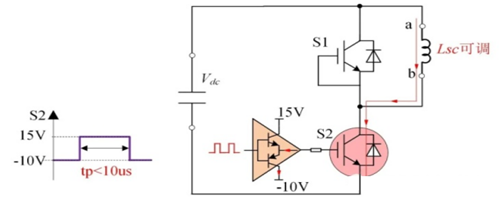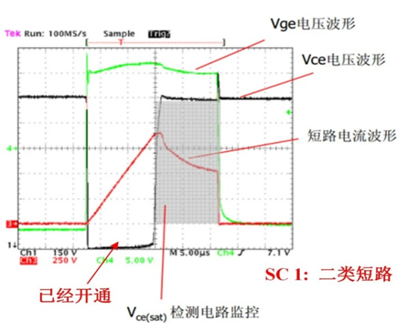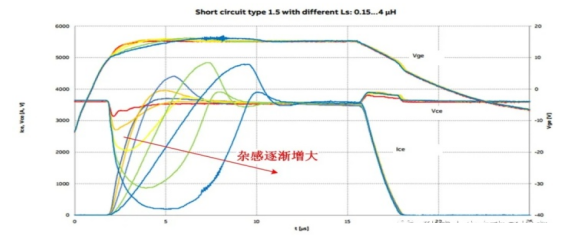What Types Of Short Circuits Are There In IGBT Applications ? (2)
4. Short circuit fault SC 1
When the IGBT is turned on, it enters the short-circuit state, which can be analyzed with the double-pulse test circuit shown in Figure 3. By changing the size of the short-circuit inductance Lsc (within tens of nH), the turn-on and short-circuit behavior characteristics of the down-side IGBT can be analyzed. SC 1 is also the most common short-circuit fault of IGBT. According to the length of the desaturation time (depending on the short-circuit circuit noise), it can be further divided into a type I short circuit and a type II short circuit.

① Type I short circuit
The typical waveform when a type of short circuit occurs to the IGBT is shown in Figure 4. The IGBT enters the desaturation state immediately after it is turned on (it has not had time to enter the conduction state). The inductance of a type of short-circuit fault loop is generally tens of nH, and this situation generally occurs in the straight-through state of the bridge arm.
A type of short-circuit fault experiment is not very easy to do, because it is difficult to control the external load inductance to tens of nH. At this time, you can use a wide wire to short-circuit the CE of S1, or keep S1 normally open. Of course, you can also use S1 Reverse connection (depending on the forward conduction characteristics of DIODE), the purpose is to control the stray inductance of the short-circuit loop as small as possible.

② Type II short circuit
The waveform of the IGBT when a type II short circuit occurs is shown in Figure 5. After the IGBT is turned on, it first enters a saturated conduction state, and then desaturation occurs. The main reason is that the inductance of the loop is slightly larger (generally more than 100 nH), and the current climb speed is slower (slower than a type of short circuit, but it is still very fast).

③Discussion
Both kinds of short circuits have one thing in common: IGBT will appear "de-saturation phenomenon". Once the IGBT exits the saturation region, its loss will increase hundreds of times, so the time allowed to continue this state is very strict, generally within 10us. It is up to the IGBT gate driver to detect this behavior and turn off the device in time.
The waveforms of the desaturation behavior of the IGBT under different noise conditions are shown in Figure 6. In order to accurately distinguish the two types of short-circuit faults, we define the desaturation behavior that occurs after the IGBT is fully turned on as the second-type short-circuit fault, and the desaturation behavior that occurs before that as the first-type short-circuit fault.



